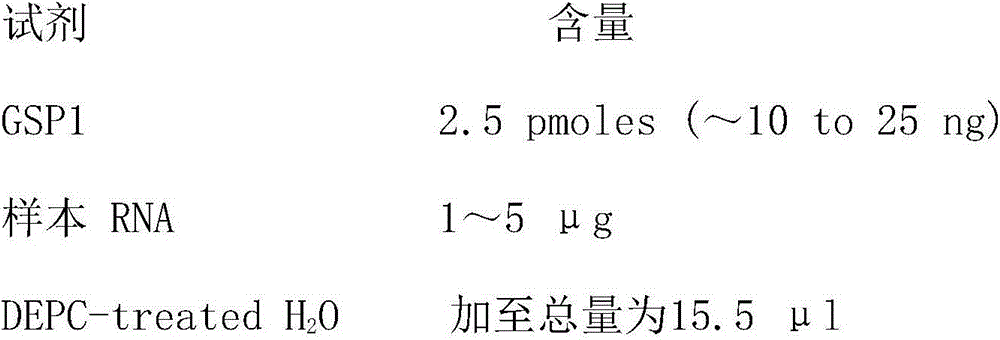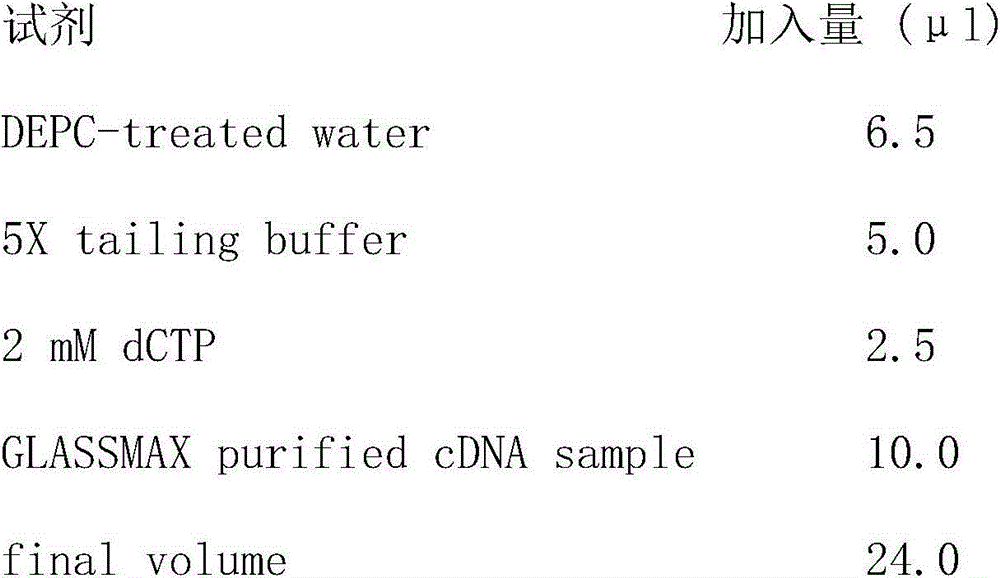Tarim red deer antler c-myc gene and application thereof
A technology for Tarim red deer and red deer antler, which is applied to the Tarim red deer antler c-myc gene and its application field, and can solve the problems of large ossification, low yield, and inability to achieve the production capacity of first stubble antler.
- Summary
- Abstract
- Description
- Claims
- Application Information
AI Technical Summary
Problems solved by technology
Method used
Image
Examples
Embodiment 1
[0019] Example 1: Full-length cloning of red deer antler c-myc gene cDNA
[0020] 1. Extraction and purification of total RNA from red deer antler: take 3-4-year-old adult red deer antler skin tissue and store it in liquid nitrogen.
[0021] (1) After fully crushing 0.5-1g of tissue in liquid nitrogen, add 3ml of Trizol reagent and shake vigorously to lyse the tissue;
[0022] (2) Transfer the above-mentioned tissue Trizol lysate into an EP tube, and place it at room temperature for 5 minutes;
[0023] (3) In the above EP tube, add 0.2 ml of chloroform after every 1 ml of Trizol, cover the EP tube, shake vigorously in the hand for 15 seconds, and after 3 minutes at room temperature, 12000 g (2-8 °C ) centrifuged for 15 minutes;
[0024] (4) Remove the upper aqueous phase and put it in a new EP tube, add isopropanol according to the amount of 0.5ml isopropanol per 1ml Trizol, let stand at room temperature for 10 minutes, then centrifuge at 12000g (2-8°C) for 10 minutes;
[0...
Embodiment 2
[0078] Embodiment 2: the application of SNP in promoting the growth of antler
[0079] 1. SNP screening: designed ORF primers,
[0080] Forward primer: GCAGCGATGCCCCACAA
[0081] Reverse primer: AATTTAGGCGCAAGAGTTCCG
[0082] 95°C 10m (94°C 30s tm57.430s 72°C 60s)*37, 72°C 7m amplified fragment 1138bp, PCR amplification of 6 Tarim red deer genomes in vitro, gel recovery, cloning, and sending to Shanghai Biological Company for sequencing; The sequencing results were analyzed with DNAman software, and the sequence comparison results showed that two mutations were located in the second exon, G / C and T / C, respectively.
[0083] 2. SNP detection:
[0084] Forward primer: GTCAGCTTCGCCAACAGAAAC
[0085] Reverse primer: GTTCTTCCTCAGAGTCGCTGC
[0086] 95°C, 10min; (94°C, 30s, 56.3, 30s, 72°C, 60s) 37; 72°C for another 7min, the amplified fragment was 751bp, and the single nucleotide polymorphism (SNP) was detected by sequencing, and it was found that: (1) There are three genotype...
PUM
 Login to View More
Login to View More Abstract
Description
Claims
Application Information
 Login to View More
Login to View More - R&D
- Intellectual Property
- Life Sciences
- Materials
- Tech Scout
- Unparalleled Data Quality
- Higher Quality Content
- 60% Fewer Hallucinations
Browse by: Latest US Patents, China's latest patents, Technical Efficacy Thesaurus, Application Domain, Technology Topic, Popular Technical Reports.
© 2025 PatSnap. All rights reserved.Legal|Privacy policy|Modern Slavery Act Transparency Statement|Sitemap|About US| Contact US: help@patsnap.com



